Peloton vs Zwift Review
Table of Contents
About Peloton

When you can’t get outdoors, to the gym, or into the studio, at-home workouts reign supreme. Before brands like Peloton came along though, exercising in your living room wasn’t exactly an exhilarating experience. From the moment it launched in 2012, Peloton quickly became a massive trend—and for good reason.
Helping busy folks get a quality workout in their own homes, the brand has also brought community, professionalism, and fun to the world of at-home workouts. Its founder John Foley is a dedicated cyclist, so Peloton’s first product was a smart, stationary bike that did it all.
Over the years, the NYC brand has expanded to 95 showrooms in the USA and Canada. It also runs two cycling studios in NYC and London.
About Zwift
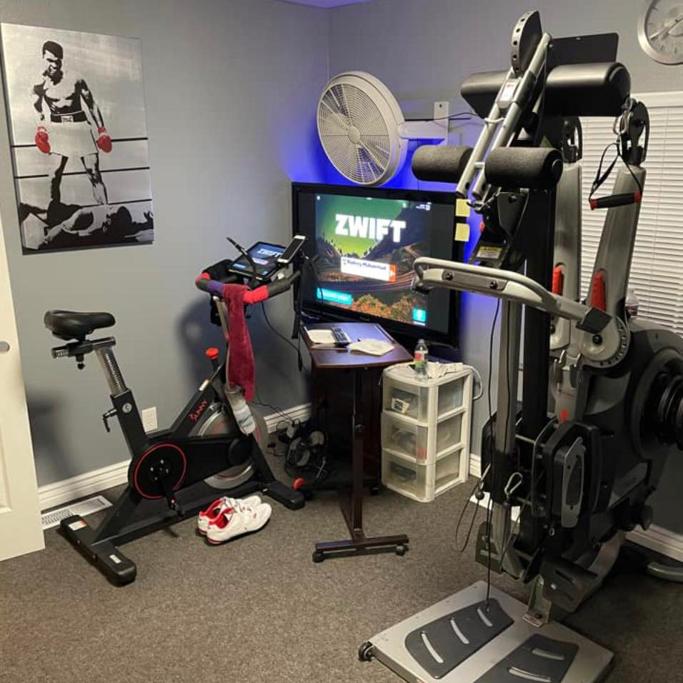
Google “Zwift” and the search engine will tell you it’s an online game. Built sort of like a virtual reality interface, you’ll create your character, hop on your pre-existing bike or treadmill equipped with a trainer, and start moving.
Zwift operates primarily as a P.T program, offering its own equipment and 3rd party gear on the side of its main feature, which is an incredibly smart app.
The brand was founded in California by Jon Mayfield, Eric Min, Scott Barger, and Alarik Myrin in 2014, and is treasured in the cycling community by those seeking to get the most out of indoor training.
Just judging by their intros here, I’m sure you can already tell these two companies are going to be pretty different. This Peloton vs Zwift review will serve to help you understand the inner workings of each and decide which one fits what you’re looking for.
I won’t just be comparing products, but I’ll also explore their programs, along with quality, values, and policies so you’ll know precisely what you’re getting. Though, before I jump into some fierce face-offs between these two unique fitness brands, it’s important to identify what it is you want.
If what you want is sort of a grey area at this point, don’t worry, I’ve put together an overview of what to keep in mind as you browse. You’ll find that up next.
What To Consider
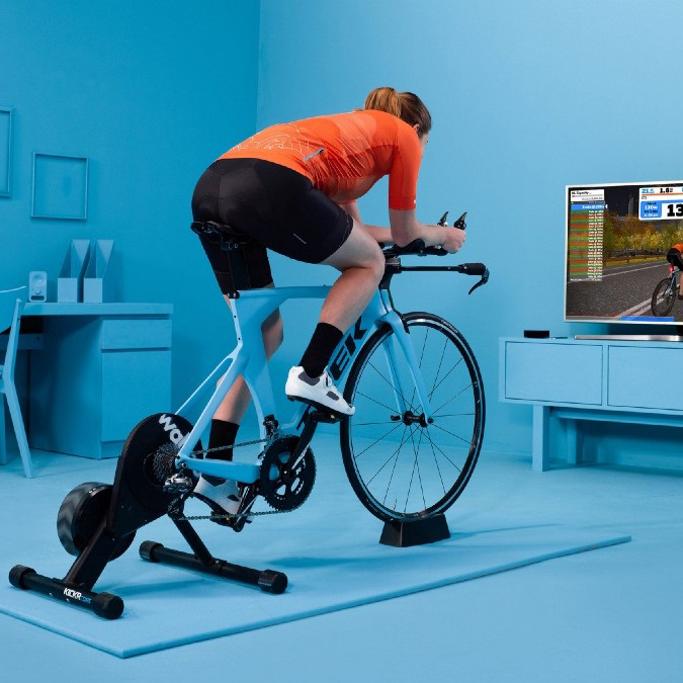
Product range
Peloton offers equipment for its Bike and Tread, along with apparel, weights, resistance bands, and anything else you may need for one of its workouts. With a range of classes, the brand has a healthy supply of gear that spans from cycling to yoga to strength workouts.
Zwift has a nice selection as well. Its gear shop is equipped with trainers, bikes, run pods, and even apparel. The only thing it doesn’t sell that you’ll need to use its app is a smart TV or tablet. Overall, it has less gear than its competitor.
Target audience
Zwift definitely has a more hardcore cycling training vibe about it, as its program is used heavily within the cycling community.
That’s not to say Peloton isn’t for those serious about fitness as well, but it’s an entirely different experience and has a more studio-based feel, ideal for those who often choose the gym over the open road.
Extras
Peloton and Zwift are all about community, and if you sign up for either brand’s newsletter, you’ll receive news about launches and exciting events. With Zwift, you’ll also get tips and tricks about how to use its platform to the fullest, and I also found that it offers something called the Zwift Academy training program.
Warranties
Both of these brands offer 12-month warranties with their products. I found that Peloton has longer warranties for certain parts of its equipment. For example, the Tread has a 5-year warranty on its frame, but a 12-month warranty on the screen.
Ease of installation
With Peloton, delivery and assembly are included in the overall cost of its equipment. Accompanied by an instruction manual, you won’t really need to do anything other than learn how to work the computer since your Bike or Tread will already be set up for you.
Zwift doesn’t offer installation services, instead, you’ll most likely have your gear already set up in your home. If you don’t, don’t worry, your trainer or pod will come with explicit instructions on how to connect it to an existing bike or treadmill.
Accessibility
To purchase a Peloton, you’ll need to buy from the brand’s website or visit a showroom. If you’d like to give one a whirl before you commit, you can always pop into one of its two studios or sign up for a class at one of 96 showrooms across the US and Canada.
Peloton isn’t available outside of the US, the UK, or Canada, but you may be able to have it forwarded (but doing so voids the warranty).
As for Zwift, you’ll find other brands of equipment on its website along with a few bits of its own. You’ll be able to buy its gear from other stores that sell it, or you can always use your own. Its app can be downloaded from anywhere on a compatible device.
Peloton vs Zwift: How Do They Work?

Fitness looks different to everyone—that’s why so many fitness brands exist. These two options are great examples of similar companies with very different platforms, and in this section of my Peloton vs Zwift review, I’ll lay out exactly how each of them works so you know what to expect before signing up.
The most important thing to mention about Peloton, perhaps, is that primarily, you’ll need to purchase the entire system plus a membership to get the full experience.
Though you can subscribe to the app, certain features are only compatible with its signature equipment—such as Auto Adjust, which lets the instructor change the resistance or incline on your bike or treadmill.
You technically don’t need to purchase the membership to use the Bike or Tread, but that’s kind of the whole purpose of buying a Peloton. I can’t imagine using one without it.
With it, you’ll have access to live classes and an on-demand library, all of which are backed with music to help you get into the groove.
The ideal process goes like this: You’ll buy your Peloton Bike or Tread, sign up for the membership, and get moving. It’s all about an accessible, enticing experience that gives you a dynamic workout on and off the machine.
Peloton:
- All-in-one experience
- Thousands of live and on-demand classes
- World-class instructors
- Tons of variety in workouts
- Great quality machine
- Uses modern technology & features
- Two months of free access
- 30-day trial
- 12-month warranty
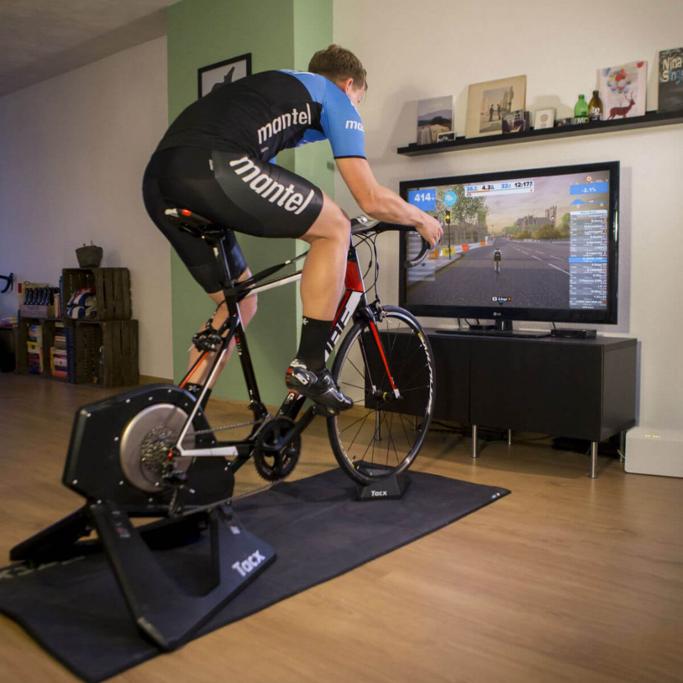
In comparison, how Zwift works is a little more virtual, though both of these brands rely heavily on an e-platform to help you train. Unlike Peloton, Zwift is primarily a competitive training game—it doesn’t manufacture its own bikes or treadmills.
You’ll need to already own your own equipment or buy it new from Zwift, and in its online shop, you’ll find a great selection of trainers, bikes, and accessories compatible with its platform. The brand focuses on cycling and running programs, but you’ll see strength workouts in its collection of classes as well.
The ideal process of starting with Zwift goes like this: grab your existing bike or treadmill, hook it up to a trainer or RunPod, download the platform, and get going.
Once you’ve picked your map, your bike or treadmill will adjust to the path beneath you. If you’re going up a hill in the game, your resistance will increase. It’s a really cool, interactive experience.
Zwift:
- Compete against other real users
- Don’t need to purchase a new bike/tread to use
- 130 different courses
- 8 different worlds
- Your incline/resistance will increase/decrease automatically
- 7-day free trial
- 1-year warranty
With Peloton, you’re probably going to want to purchase the full out Bike or Tread to get the full experience, whereas with Zwift, if you have an existing bike or treadmill, all you’ll need to do is purchase the trainer.
Overall, Zwift is going to cost you less if you already have the right equipment, but it’s great that Peloton offers it in one pretty package for those that don’t.
Peloton Classes vs Zwift Training Plans Review:

Sure the equipment is amazing, but people choose Peloton and Zwift because of their training platforms and classes.
Working out at home by yourself is sometimes boring and often results in scrolling through YouTube for free classes only to get side-tracked by funny cat videos. Trust me, I’ve been there.
The point of choosing either of these brands is for the motivation, interaction, and variety, not to mention the convenience of having a fun, interesting workout just a few steps away from where you drink your morning coffee.
In this section of my Peloton vs Zwift review, I’ll look into both of their programs delivered virtually through a screen, smartphone, or TV.
The Peloton Monthly Membership gives you unlimited access to thousands of different classes (12 types in total) that cover cardio, strength, boot camps, and yoga.
You’ll be able to find classes based on your mood, goals, music taste, and experience level, but regardless of the one you choose, you’ll get an expert instructor no matter what.
Available to watch on your phone, tablet, TV, or on the web, the Peloton Membership is loved for the sense of community it builds, letting you “high five” other class members and add #tags to let others know how you’re feeling. With the Bike or Tread, you can sign up for $39/month.
Peloton Monthly Membership:
- 12 different class types
- World-class instructors
- Thousands of classes to choose from
- Option to filter by activity level
- Live & On-demand classes
- Two months of free access

Zwift’s platform is structured a little differently, though you’ll still have access to more than 1k workouts that are tailored to your goals, time, and ability. With guided intervals, users are challenged to push to their limits with the help of world-class instructors.
As you workout, you’ll earn points and unlock achievements, cycling or running alongside other real users just like you. Zwift offers four different training plans:
- Build Me Up
- Running 101
- Record Breaker
- TT Tune Up
Each one differs by activity and level. For your rides, you’ll get to pick from 130+ routes across eight different “worlds,” and the platform very much operates like an online game.
The faster you pedal, the faster your avatar will go. You’ll be able to watch yourself zoom through other users or pace yourself with a friend. Sign up for just $15/month.
- Game-like
- Different training programs
- Over 1,000 workouts
- 130 routes to choose from
- Great for beginners and experts
- Low cost per month
Though the mission of each of these platforms is to make fitness interesting, fun, enjoyable, and accessible, Peloton has a studio-like feel whereas Zwift is more game-based. With tons of workouts and classes to choose from, it looks like Peloton may have more variety, but I adore the competitive gaming concept of Zwift.
Peloton Bike+ vs Zwift Wahoo Kickr Smart Power Trainer Review:
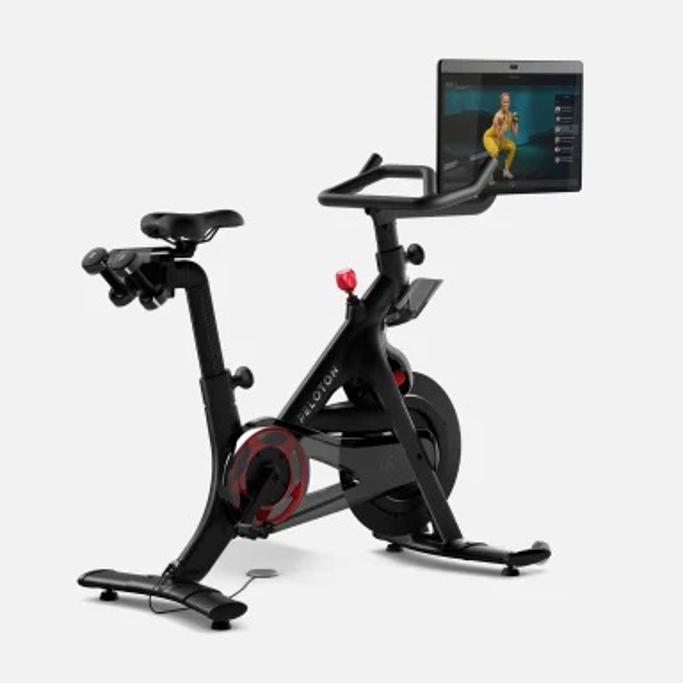
Scrolling through product after product can get a little tedious, especially with the plethora of information available online. This part of my Peloton vs Zwift review will try to streamline the process for you, putting one of each of the brand’s similar products head to head to see what the real differences are between them.
The Peloton Bike+ is the brand’s newest bike model. It boasts a 360-degree rotating 23.8” screen so that you can take your workouts off of the cycle and into strength, yoga, or whatever other class captivates you on the app.
Clearly displaying your stats, the leaderboard, and your instructor, the large screen provides studio-quality sound to help you sink into your workout no matter where you are.
Weighing 140lbs, the Bike+ takes up 4’ x 2’ of space in your home and comes with a 12-month warranty, 30-day trial, and two months of free access to the app. Get yours for $2,195.
Peloton Bike+:
- Compact, doesn’t take up a lot of space
- Clear sound & glare-free screen
- Large, rotating screen
- Auto-adjust option
- Can trade in your previous model for a $700 rebate

On the other hand, the Zwift Wahoo Kickr Smart Power Trainer is something you’ll hook your existing road bike up to. Providing up to 2200 watts of resistance and 16lbs of weight, you’ll get to choose between three incline settings and 11-speed cassettes to give you a real road-like feel.
Measuring your speed, stance, power, and cadence, this smart trainer weighs 46 lbs and is foldable for easy storage. Kick things up a notch with Wahoo for $1,200.
Zwift Wahoo Kickr Smart Power Trainer:
- Can add to an existing bike
- Easy to store
- Tons of speeds & resistance options
In general, it’s not hard to see that these two pieces of equipment are very different. With one, you’re getting the whole shebang. With the other, you’ll need your own bike and TV in order to use the Zwift app.
Neither the Peloton bike nor the Zwift trainer comes with the classes; you’ll need to sign up separately and pay an additional fee.
Peloton vs Zwift: Quality
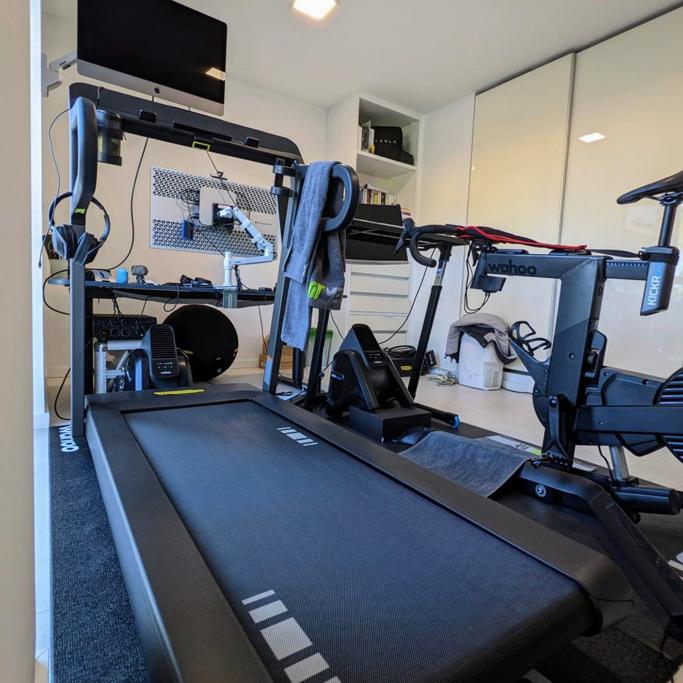
Products get so hyped up in commercials—it’s hard to know if something is truly quality or if it’s just a cheap hunk of junk.
Based on reviews and the popularity of both of these brands, I’ll take a shot in the dark here and say they’re far from poorly made, but still, it’s important to round out this Peloton vs Zwift review by looking into their offerings to suss out what they’re made from.
The specs for Peloton’s equipment are impressive. Each machine is made with modern technology and features that put it ahead of its competitors. Here’s a basic rundown of what you’ll get with the Bike+:
- 8-megapixel camera with privacy cover
- 2.2 channel front-facing stereo speakers with 26 watts
- 2.2 rear-facing woofers
- WiFi & Bluetooth compatible
Peloton makes the majority of its treadmills and bikes in Taiwan. This year, the brand announced that due to demand and production supply issues during the pandemic, it will be building its own factory in Ohio, USA.
Peloton’s virtual classes are delivered through either its Bike or Tread, but if you choose to sign up for the app only (and don’t purchase one of the machines), it’s compatible with your iPhone, tablet, Roku, Firestick, etc., etc. Basically, no matter what you have, you’re covered.
Now, Zwift’s operation is mostly e-based. Though members do purchase equipment from them, they don’t make a whole lot—the focus is on the platform itself. And it’s managed and controlled from the brand’s HQ in California.
It’s kind of difficult to compare these two brands in quality as Zwift doesn’t make its own bikes or treadmills. In regards to the app, you’ll need an ANT+ cadence and speed sensor to connect your bike. The brand offers these on its website.
What I really love about both of these companies, and what I feel makes both of their programs high-quality, is the way that their programs are involved in your workouts.
With Peloton, your instructors set your resistance level or incline for you. With Zwift, as you cycle downhill, the resistance automatically gets lighter.
Easy to use and get started with, these two brands have developed quality equipment and smart apps. They’re different, yes, but considering what each of them does, they’re top runners in the at-home fitness category.
Peloton vs Zwift: Price & Value

Hey, if any piece of exercise equipment is going to turn a monotonous workout into something to look forward to, I think it has high value. Am I alone in this?
Both Peloton and Zwift were designed for this very reason (among others), so I don’t think it’s a long shot to say their equipment is worth paying a pretty penny for.
But the cool thing about both of these brands is that they have options. Whether that’s different models of bikes, trainers, or plan variations, the folks at both want to make their products and services accessible.
To look further into what each brand offers for their prices (a natural inclusion in any Peloton vs Zwift review worth its salt), I’ll take a look at a few prices for either and what you get for those amounts. Let’s start with prices for Peloton’s equipment.
- Bike: $1,495
- Bike+: $2,195 (on sale from $2,495)
- Tread: $2,495
All of this basic equipment (as in, just the Bike or Tread—Peloton offers packages as well with additional equipment) comes with a 30-day at-home class trial, a 12-month warranty, delivery, and assembly. Now, you can very well use your Bike or Tread as it is, but the whole thing about this brand is accessing its classes.
If you’d like to do that, you’ll be paying a $39 monthly fee that gives you access to live daily sessions and thousands of other on-demand classes. If you don’t own a Peloton Bike or Tread, you’ll have access to the on-demand classes on the app for $13/month. You’ll need a smartphone, tablet, or computer to view them.
So where does the value come in? Well, in a few places actually.
Considering how well-made Peloton’s machines are (plus the fact that it’s currently building a US factory) and that its classes are taught by world-class instructors, your Bike or Tread plus the membership is akin to visiting a world-renowned gym except, you can get the same caliber of workout in your home.
In comparison, Zwift offers the same kind of value in allowing customers to stay home and get a great workout, but its vantage comes by way of its interactive gaming format.
People go to the gym to get a sense of community, and it’s pretty cool that this brand has managed to establish that with its competitive platform.
How about its prices? Well, unlimited access across its cycling, running, and workout platforms is $15/month, and there are training programs to sign up for to help you reach your goals.
Zwift makes some of its own equipment, but for the most part, it sells some of the top in-home trainers out there. Here are a few:
- Tacx Neo Bike: $3,200
- Wahoo Kickr Core (trainer): $900
- Saris M2 (trainer) $400 from $450
- Zwift RunPod (for your treadmill): $40
What’s cool about Zwift is that its equipment allows you to make any piece of existing equipment (treadmill or road bike) compatible with its program. If you already have one, and there’s a good chance you do, you don’t need to go out and buy a new one.
That makes this company valuable in my eyes and is something that sets it apart from Peloton.
Zwift’s top-of-the-line assortment of bikes, accessibility, and low monthly cost make it a great choice, but who can resist an all-in-one machine like Peloton?
Valuable for similar and different reasons, your choice may come down to whether or not you’ve already got a bike or treadmill you love at home.
Peloton vs Zwift: What Do Customers Think?
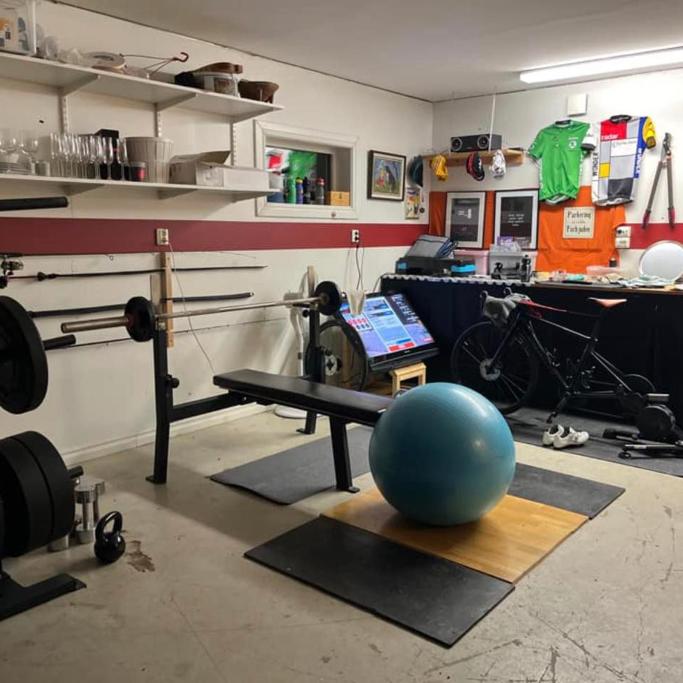
Both of these companies were founded within 2 years of each other, and each is extremely popular—just with different crowds. Peloton has been changing the game for consistent gym-goers, giving people an option to get an amazing workout in their own homes. I wouldn’t say it’s necessarily a more popular company than Zwift, but it may be better known.
In an attempt to find out exactly what customers think about each of these two brands, this section of my Peloton vs Zwift review is dedicated to feedback. Let’s start with a few ratings I gathered for Peloton from around the web.
- CNet: Bike+ earned 7.8/10 stars
- PCMag: Tread earned a score of 4.5/5
- Digital Trends: Bike earned a score of 8/10
Peloton definitely has a community of followers online, and almost every review I came across consisted of a story about how using its equipment and app was wildly addictive.
When it comes to exercise, actually looking forward to using your equipment is a huge plus. Several bits of feedback appeared to be common throughout online reviews:
- Users love the sense of community
- The classes and workouts are fun
- Users felt pushed and supported by instructors & other members
- The machines are quiet
Peloton certainly has some stellar feedback, and the negatives aren’t too far from what you’d expect. The most common issue that customers had was with shipping, and to this, I say: expect the best and be prepared for the worst.
Depending on the time of year ordered and where the items are shipped to, delivery can be in as little as a few days and as long as a few months.
So what did customers have to say about Zwift? There are not a ton of star ratings on the web for the brand, and below, you’ll find a roundup of all the scores I could find for its app:
Zwift
- Bike Test Reviews: 4.4/5 stars
- Google Play: 3.9/5 stars from 14,033 votes
- Apple Apps: 4.6/5 stars from 7,742 ratings
Since the brand doesn’t manufacture a lot of its own equipment, it doesn’t really make sense to look outside of its site for the other gear it offers, but I did find that customers say it carries some of the best options out there for indoor training. In addition to that, there were a couple of other common phrases I came across:
- Users love it for the winter months
- There is a nice variation of programs and routes
- It makes indoor cycling fun
- It makes for an enjoyable sense of community and camaraderie
At the end of the day, it appears that these two brands are loved by different groups of people. They both have similar scores and are enjoyed for their quality equipment, community feel, and the fact that they actually make working out fun.
Peloton vs Zwift: Promotions & Discounts

Starting or maintaining a fitness regimen requires effort. Brands like Peloton and Zwift exist to make keeping up good habits easier and more enjoyable, but they understand that making the initial purchase (especially when it’s a large one) may come with hesitation.
Even though those who own and use either machine say they’re definitely worth it, it’s still an investment and that’s why you’ll find special deals and discounts when you shop with both brands.
Here’s what I found after searching each of their websites for this Peloton vs Zwift review:
Peloton
- Sign up to the mailing list and get $50 off $100 of Peloton Apparel
- Discount for military personnel, students, and first responders
- 2 Month Free Trial to the Peloton App
- Free shipping to the continental US
Zwift
- 7 Day Free Trial
- Free US shipping
Ok, so Peloton definitely has more discount offers than Zwift does, but that’s to be expected with such a big brand. Zwift’s offers are still great though, because who can say no to free stuff? At the end of the day, offering any kind of discount is a good sign that a business cares for its customers.
Peloton vs Zwift: Shipping & Returns
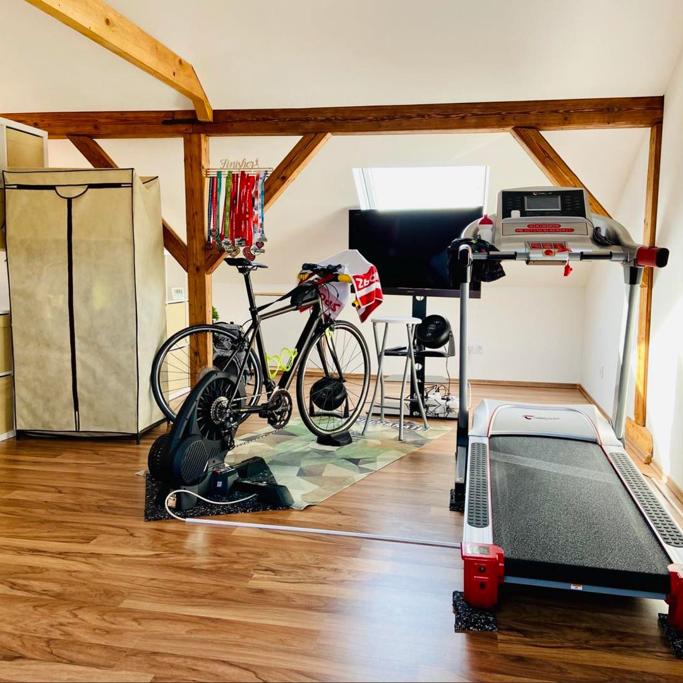
Both of these brands sell fitness equipment and both of their services can be used via an app as well.
If you find yourself in need of a bike, treadmill, or any other piece of gear, this part of my Peloton vs Zwift review is all about what it takes to get said gear to you, what happens if you need to return it, and what the general warranty specs are like.
After combing the web for feedback about what it’s like to order from Peloton, I found a few tidbits of helpful information about what the shipping process is like for real customers. Here’s it in short:
- Ships to the US, UK, and some parts of Canada
- Bike & Treads shipped in 2-3 weeks
- The closer you live to a Peloton hub, the faster you’ll get your order
- Previous models ship faster than new ones
The Peloton Bike and Tread come with a 30-Day Home Trial Offer that lets you test them out. If when you do, you find that it’s not everything you hoped it to be, you can return it for a full refund. If the equipment is damaged in any way or has a missing part, you’ll be charged a restocking fee.
The Bike, Bike+, and Tread come with a limited warranty that varies by part. For example, the Tread Frame is backed for 5 years, the belt for 3, and the touchscreen display for 1. The warranty covers defects in materials and workmanship—not regular wear and tear or issues that arise from abnormal use.
On the other foot, Zwift gear is all sold “as is.” This means that you’ll take full responsibility for repairing or replacing it if something should happen. Nothing is covered by a warranty, and that included their 3rd party products from other brands.
If you should need to return any of your gear, you can do so within 30 days of purchase. You’ll be responsible for all return shipping costs, and for those shipping back from the US, you’re looking at about $50 for trainers and $250 for smart bikes. Some basics of Zwift’s shipping policy:
- They deliver to the entire US, the UK, and the EU
- Orders are processed and set out immediately
There don’t appear to be many issues with Zwift shipping as the majority of customers already have their own bikes, they choose the brand for its program more so over its gear since most of it is from other companies (Kickr, Wahoo, etc.).
This is contrasted with Peloton which is chosen primarily for its equipment, and I was able to find more detailed reports on what shipping was actually like.
Since Peloton makes and sells its own equipment, it also offers a warranty—something you won’t get from Zwift. With that said, the brand has also been associated with long wait times for its new products (Tread, Bike+), whereas Zwift’s shipping appears to be steady across the board.
Who Will You Shop With?

Both Peloton and Zwift are excellent options for those who want to take their workouts indoors. Ideal for bad weather days or the chilly season, they give users options—and plenty of them.
It’s hard not to be impressed by the world of Peloton, its marketing alone is enough to make you crave a sweaty spin sesh. Offering both a class platform and the gear to do it on, its machines boast an all-in-one vibe that is a little different from what Zwift is all about.
Cyclists flock to Zwift for its fun, interactive program that pretty much works like an active video game.
Your digital self will race other real people on the platform, but you’ll have to put in the work to get ahead. Users love the choices of maps and courses the program houses, of which the same can be found in its version for runners.
If there’s one thing to learn in this Peloton vs Zwift review, it’s that you’re getting something a little unique with each brand.
Looking for a machine that does it all? Peloton’s Bike and Tread carry you through workouts on and off their machines.
Want to feel like you’re on the road and racing against real competitors? Zwift is your man.
Check out similar articles you might like:






Ask the community or leave a comment
WRITE A REVIEWCustomer Reviews
Leave a review